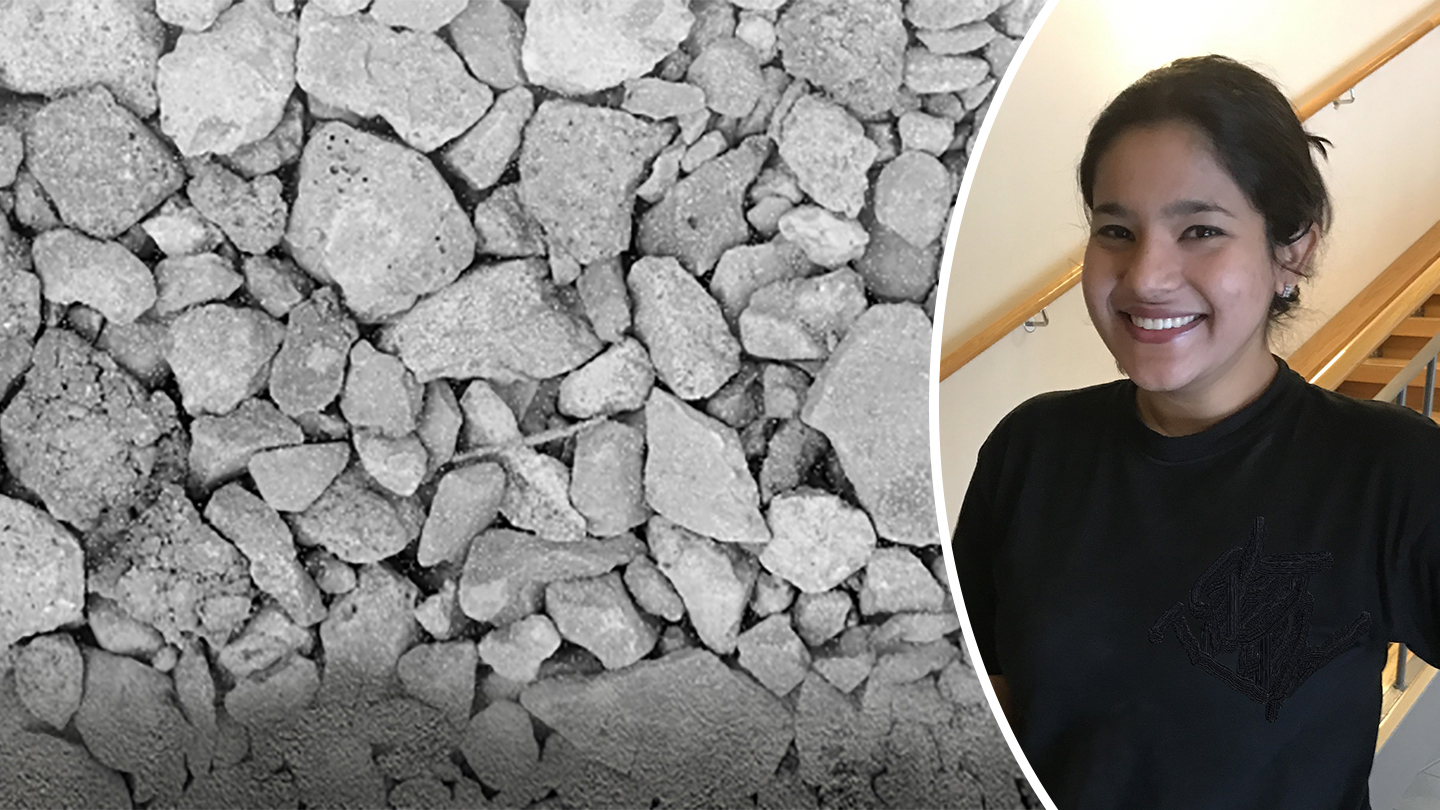New method – recycled concrete becomes new concrete
2021-02-25

Madumita Sadagopan has, in her doctoral project, investigated whether it is possible to produce structural concrete by replacing crushed stone and natural aggregate with recycled concrete without also increasing the amount of cement. She has now produced a new concrete with matching compressive strength and workability as a reference concrete.
Recycled concrete increases in value
“In Sweden, concrete waste is considered low-valued; it simply ends up as landfill or is used as backfilling of roads and the construction of landfills. Concrete waste as aggregates in new concrete production extends the technical life of structural concrete and means closed-loop recycling. This is a high-utility application that preserves the value of the material,” explained Madumita Sadagopan.
She has studied what happens if conventional aggregates, such as crushed stone and natural aggregate, are replaced with 100 per cent crushed concrete aggregate. In another scenario, fine natural aggregate was replaced with fine crushed concrete aggregate, with crushed stone retained as coarse aggregate. This represented about a 50 per cent replacement of recycled aggregate. Part of the cement was also replaced with blast furnace slag. The purpose was to see whether it is possible to use this type of concrete for the design of structures, and to investigate what differences there are when compared to concrete with natural or crushed stone aggregates.
The result: a climate-optimised concrete
“By introducing a mechanical pre-processing method to improve the quality of crushed concrete aggregates, and by replacing part of the cement with blast furnace slag from steel production, we managed to achieve a climate-optimised structural concrete.”
“Moreover, we identified water absorption as a property that differentiated recycled concrete aggregate from virgin aggregates. By modifying a standard procedure to be more industrially feasible, we were able to arrive at a reliable result. These results were helpful in optimising the workability of the concrete, which is a critical requirement for industrial concrete.”
How does your project benefit industry and society?
“Recycling of concrete means less concrete waste ending up at the landfill, and exhibits circular economy potential in the concrete production sector. The project demonstrates that recycled concrete is suitable as aggregate for an indoor reference concrete. Further research is required to solve practical aspects such as waste logistics and economic feasibility to develop a concrete-waste supply chain to commence the commercial recycling of concrete,” said Madumita Sadagopan.
The project connects to the UN’s global sustainability goals
“By using crushed concrete aggregates in place of virgin aggregates, we can reduce the excavation of virgin aggregates, which is necessary for drinking water reserves and ecological preservation,” she explained.
The project connects to the global goal 15, Life on Land, and goal 12, Responsible Consumption and Production, and goal 11, Sustainable Cities and Communities.
Now, Madumita Sadagopan hopes for a transfer of knowledge of the researched methods to the industrial sector and a scaling up of the trials on an industrial level.
Read more
Madumita Sadagopan will defend her doctoral thesis within the research area Resource Recovery at the University of Borås on 26 February 2021.
Read the doctoral thesis: Recycling of concrete in new structural concrete
Principal supervisor: Katarina Malaga, Professor
Assistant Supervisor: Agnes Nagy, Senior Lecturer
The doctoral project has been carried out within the research programme RE:concrete.
Solveig Klug
Adobestock, Portrait photo, private

